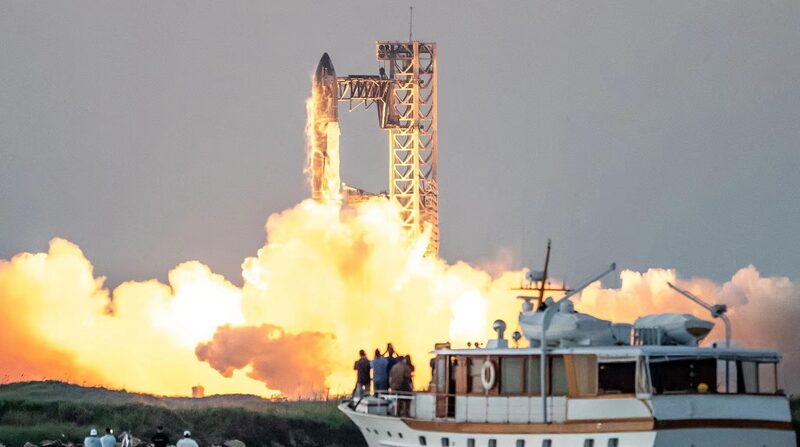In a groundbreaking achievement, SpaceX launched its colossal Starship rocket on Sunday, marking its most ambitious test flight to date. The Super Heavy booster, standing at an impressive 121 meters tall, was successfully captured by mechanical arms upon its return to the launch pad.
The launch took place at 7:25 a.m. local time from the southern tip of Texas near the Mexican border under clear skies. As the booster descended, two massive mechanical \"chopsticks,\" affectionately dubbed \"Mechazilla\" by SpaceX CEO Elon Musk, extended from the launch tower to securely catch the booster, ensuring a smooth landing.
Following its launch, the upper stage of Starship was slated to splash down in the Indian Ocean within the hour. This test flight builds on last June's successful Starship splashdown, a pivotal moment towards Musk's vision of human missions to Mars. Since Starship's unveiling in 2017, the rocket has faced several explosive setbacks during early testing phases, making this success even more significant.
During reentry, Starship's horizontal orientation allowed onboard cameras to capture a mesmerizing pinkish-purple glow from the superhot plasma enveloping the ship's Earth-facing side and its two steering flaps. The intense hypersonic friction created a stunning visual phenomenon, highlighting the rocket's advanced heat-shielding technology.
The ship's heat-exposed surfaces are protected by 18,000 improved heat-shielding tiles, an upgrade from June's tests where tile damage posed challenges during reentry. These enhancements are crucial for SpaceX's goal of developing a fully reusable rocket capable of carrying larger payloads, supporting NASA's Artemis program for lunar missions, and eventually reaching Mars.
NASA is closely monitoring SpaceX's progress, as a modified Starship is expected to serve as a lander vehicle for crewed missions to the moon later this decade under the Artemis program.
SpaceX emphasized the extensive preparation behind the successful booster catch, noting that engineers had invested years of development and thousands of hours into building the necessary infrastructure and ensuring all criteria were met for the attempt.
Had the conditions not been favorable, the booster was prepared for a splashdown in the Gulf of Mexico, consistent with previous tests. However, with optimal conditions, the mechanical \"chopsticks\" successfully decelerated and captured the booster, showcasing a major step forward in reusable rocket technology.
This innovative catch-landing technique not only enhances SpaceX's operational efficiency but also paves the way for more sustainable and cost-effective space exploration missions.
Reference(s):
cgtn.com




